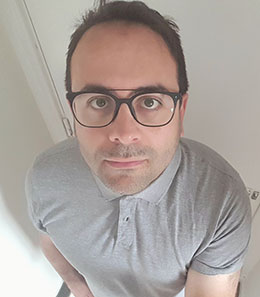|
Thursday 19th October 2017, 5.45pm
MBI Al Jaber Building, London Middle East Institute, SOAS
 A return to Arabian art and architecture in Cairo at the beginning of the 20th century: the patronage of Prince Mohammed Ali Tewfik A return to Arabian art and architecture in Cairo at the beginning of the 20th century: the patronage of Prince Mohammed Ali Tewfik
Dr. Sami de Giosa, Fellow at the Khalili Research Centre, University of Oxford
Heir to the throne of Egypt for many years, Prince Mohammed Ali Tewfik (d.1954) toured the Islamic world and amassed a small art treasure which includes prestige Arabian textiles like those adorning the Ka’ba in Mecca. Upon returning to Egypt, for his Palace he eyed a plot of land in Manial/Rawda apparently attracted by a gigantic banyan tree planted there by one of his ancestors. He was also aware of the historical connotations of the place; according to medieval historians, the island of Rawda was famed for its unique flora in Egypt, and for the Palace of the last Ayyubid Sultan, Salih Najm al-Din (r.1240 – 1249).
Away from the modern Cairo of Khedive Ismail, in a place equipped with such a significant pedigree, the prince enshrined the reason for his construction in an inscription on the main gate of the complex stating that the Palace was built to revive the Islamic arts.
The neo-Islamic pastiche of the Manial Palace in Cairo (1909-1929) is a vivid representation of patrons and architects reviving indigenous aesthetics lost with the advent of European colonialism.
The monument is also the only real palatial example of a Cairene trend of the early 20th century: the use of neo-Islamic style for secular buildings housing Islamic art collections. With the help of sources such as Prince Muhammad Ali Tawfiq’s diaries and architectural drawings, this paper will dwell on this hitherto understudied aspect of the palace.
A substantial collection of Islamic art, various Arab and Ottoman rooms, together with an eclectic exterior confer to the Palace the role of an art and architectural trove in an already art-rich metropolis. Within this talk I will also attempt to unravel the narratives of the connubial relation between the Palace and its objects within the context of similar contemporary projects in Cairo, namely residences of connoisseurs with Islamic art collections.
Sami is a Fellow at the Khalili Research Centre, University of Oxford, having previously worked at the British Museum as a project curator. He completed his PhD in Islamic art at SOAS with a thesis on the revival of art and architecture in Cairo under Sultan Qaytbay in the late Mamluk period. His publications include articles on the production of ceramics in Egypt and Syria during the 15th century and on the use of Christian symbols in Mamluk architecture.
You can download a pdf flyer for this lecture.
In order to reserve a seat for the lecture, please email [email protected] as seating is limited.
Please note that the views expressed by the speakers in this lecture series should not be interpreted as views held by the MBI Al Jaber Foundation. |
